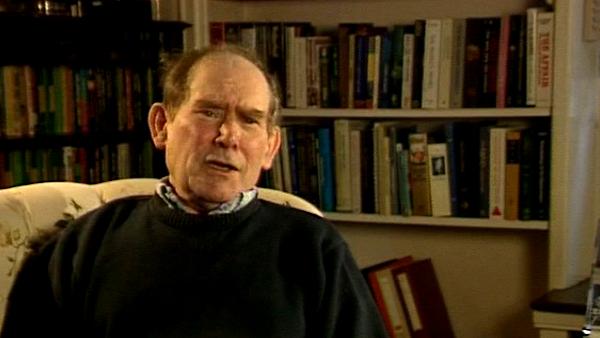NEXT STORY

Lab space
RELATED STORIES

NEXT STORY

Lab space
RELATED STORIES


|
Views | Duration | |
|---|---|---|---|
| 111. A completely interlocking theory | 212 | 01:24 | |
| 112. Lab space | 276 | 01:37 | |
| 113. Experimenting with adding messengers to ribosomes | 216 | 03:55 | |
| 114. The state of biochemistry in Britain | 258 | 02:54 | |
| 115. 1962: a new lab and a new way of working | 249 | 01:04 | |
| 116. The importance of understanding molecular structure (Part 1) | 263 | 03:01 | |
| 117. The importance of understanding molecular structure (Part 2) | 236 | 04:36 | |
| 118. Looking for a new subject and inventing names | 239 | 04:16 | |
| 119. DNA replication | 235 | 02:39 | |
| 120. DNA replication: the first experiment | 226 | 04:23 |


It was the real house of cards theory; you had to buy everything – that is, you couldn't take one fact and let it stand on itself and say the rest could go. Everything was so interlocked. You had to buy the plus minuses, you had to buy the barriers, you had to buy the triplets phase, and all of those remained together. And it was the whole that explained the thing. And if you attacked any one part of it, the whole thing fell apart. So it was all or nothing theory; it was very interesting because of the coherent thing. And very hard to communicate to people who just thought, you know, this is just, it can't be done this way. However, I think that that is one of the most beautiful… I mean, aesthetically elegant experiences of my life, in which, just by doing these little operations, you land up with this detailed description of the molecular structure of living matter. And all of those things happening at the same time – this in 1960 to 1961.
South African Sydney Brenner (1927-2019) was awarded the Nobel Prize in Physiology or Medicine in 2002. His joint discovery of messenger RNA, and, in more recent years, his development of gene cloning, sequencing and manipulation techniques along with his work for the Human Genome Project have led to his standing as a pioneer in the field of genetics and molecular biology.
Title: A completely interlocking theory
Listeners: Lewis Wolpert
Lewis Wolpert is Professor of Biology as Applied to Medicine in the Department of Anatomy and Developmental Biology of University College, London. His research interests are in the mechanisms involved in the development of the embryo. He was originally trained as a civil engineer in South Africa but changed to research in cell biology at King's College, London in 1955. He was made a Fellow of the Royal Society in 1980 and awarded the CBE in 1990. He was made a Fellow of the Royal Society of Literature in 1999. He has presented science on both radio and TV and for five years was Chairman of the Committee for the Public Understanding of Science.
Tags: 1960, 1961
Duration: 1 minute, 25 seconds
Date story recorded: April-May 1994
Date story went live: 24 January 2008